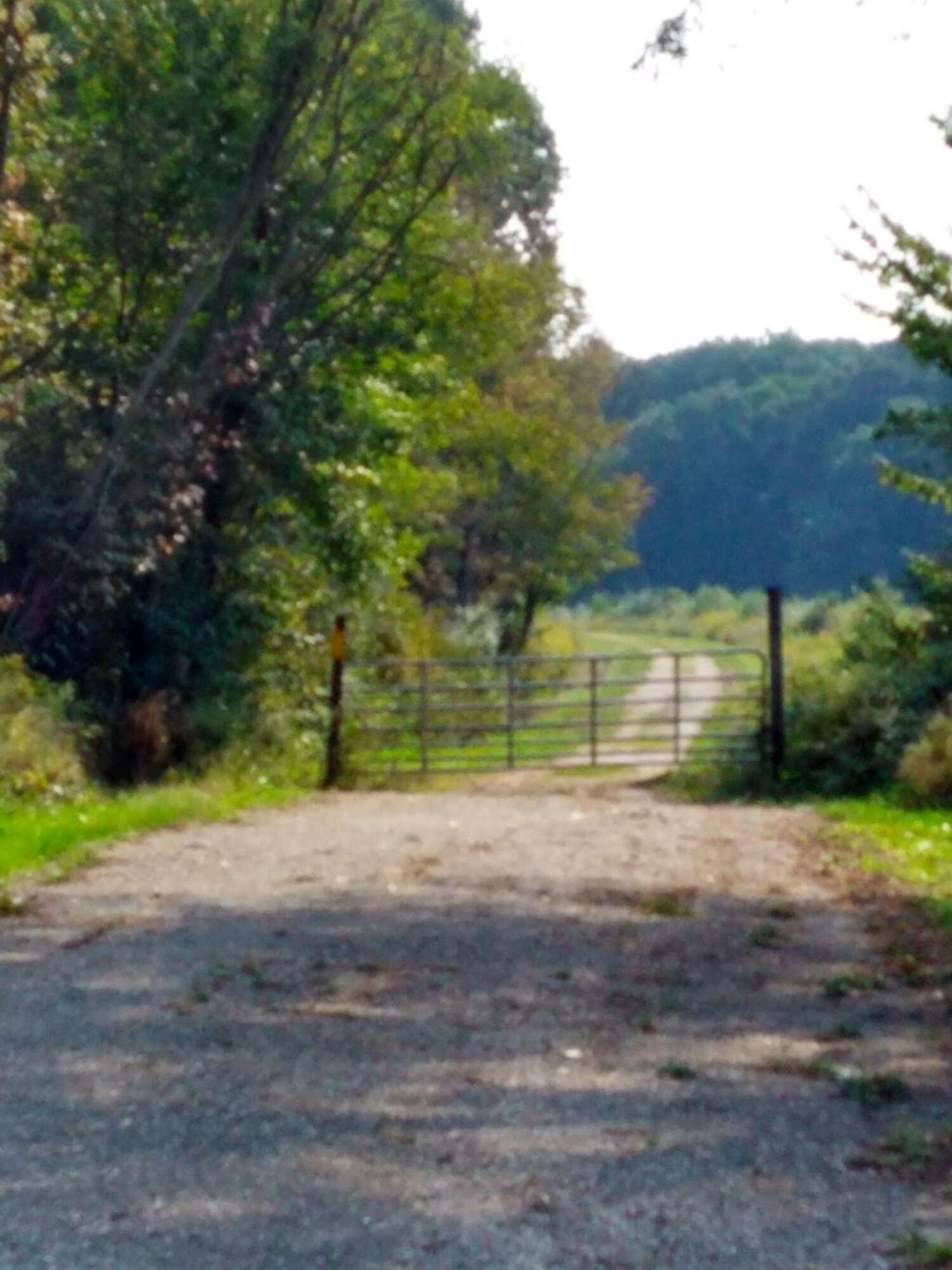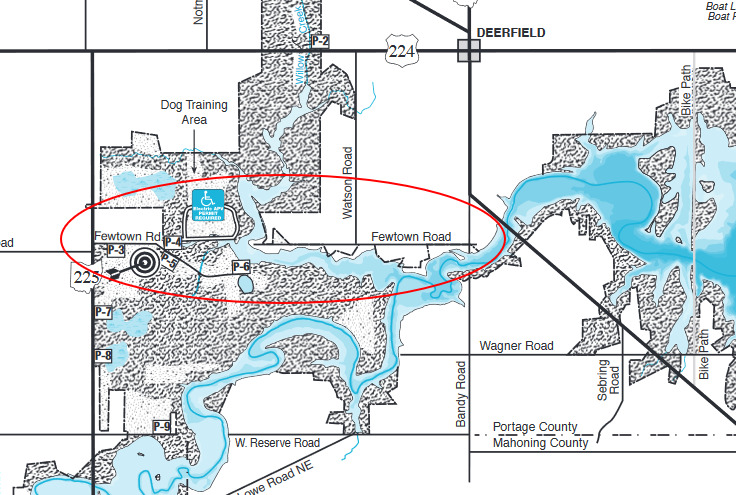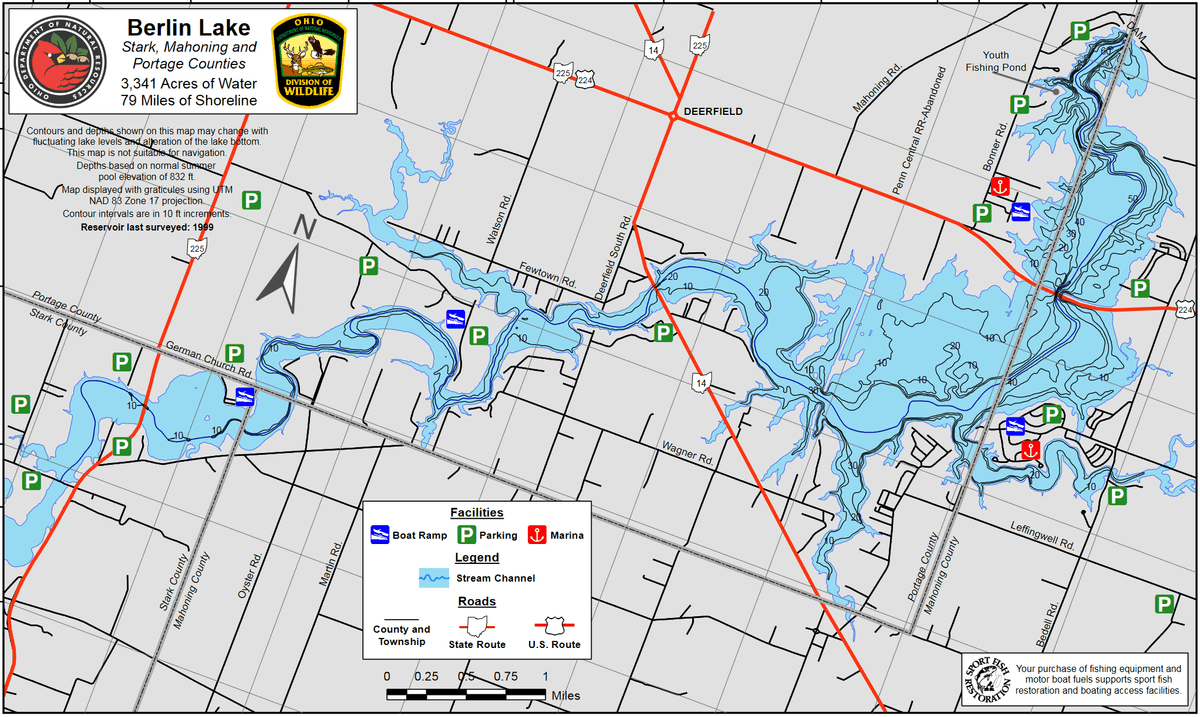Berlin Lake Wildlife Area--Fewtown Rd.

Berlin Lake Wildlife Area--Fewtown Rd.
North Benton, Ohio 44449
Official WebsiteBerlin Lake Wildlife Area map
Berlin Lake Official Website
US Army Corps of Engineers Water Management website
Berlin Lake map
Also, see all the hotspots at:
Berlin Lakes System Important Bird Area
About this Location
Berlin Lake Wildlife Area, 8,518-acres, is situated in northeast Ohio on lands adjacent to Berlin Lake. The area is scattered, lying both north and south of US-224. The western part can be reached from State Route 225, the central portion from OH-14, and the eastern portion from US-224 and Bedell Road.
At full summer pool (elevation 1,024.7 feet), the surface water area of Berlin Lake totals 3,590 acres. Approximately 4,928 land acres are available for public hunting. The topography of the land ranges from flat to gently rolling. The soils are poorly drained and low in productivity.
Nearly 60 percent of the wildlife area consists of second growth hardwoods. The timber stands are mainly pin oak, hickory, elm, ash, and red maple. Swamp white oak, other maples, beech, birch, and sycamore are present in lesser numbers.
The Berlin Lake project was authorized in 1938 to provide flood control and a water supply for industry downstream. Full operation of the project, by the U.S. Army Corps of Engineers, was initiated in 1944. In 1946, the Division of Wildlife was granted a license for fish and wildlife management on the 6,935 acres in the project area. The state began additional land acquisition in 1956 for public hunting and currently owns over 1,200 acres.
The wildlife management plan provides for the maintenance and protection of existing woodlands, establishment of regular crop rotations, improvement of open fields for nesting, and establishment of food patches for general wildlife use. Permanent wildlife cover has been provided by planting trees and shrubs along field borders and in odd areas and by establishing brushy field dividers.
The primary purpose of the wildlife area is to provide general public hunting and fishing. Other uses which have become popular include dog training and hunting dog field trials.
Berlin Lake contains diverse sports fish populations which include largemouth bass, smallmouth bass, white bass, walleye, white crappie, black crappie, bluegill, channel catfish, brown bullhead, and muskellunge.
Cottontail rabbit, ring-necked pheasant, squirrels, woodchuck, raccoon, muskrat, mink, white-tailed deer, and opossum are the principal upland game and fur species. During fall migration, sizable flights of woodcock augment local production. Waterfowl occur on the lake and on the ponds and beaver marshes on the area. Beaver have become fairly common. The impoundments on the area provide excellent habitat not only for beaver, but for many furbearers, shorebirds, and waterfowl. During migration, bald eagles may be seen on Berlin Lake along with a great variety of songbirds.
About Berlin Lake
See all hotspots at Berlin Lake
Berlin Lake spans three counties. The eastern portion is in Stark County, the middle portion is in Portage County, and the western portion is in Mahoning County. See the map for the county line boundaries.
Berlin Lake lies in the northeastern part of Ohio at the junction of Stark, Portage, and Mahoning counties. The lake is located on and is accessible from US-224 and OH-14 and OH-225. The U.S. Army Corps of Engineers constructed Berlin Lake in 1942 on the Mahoning River. The Congressionally authorized purposes were flood control, low flow augmentation, water quality control, and water supply. Berlin Lake has a mean depth of 23 feet with a maximum depth of 55 feet. Annual water level fluctuations can be as much as 20 feet. Mud, sand, and gravel make up most of the bottom composition. Rock ledges can be seen along the original river channel at low pool level.
Restroom facilities can be found at the headquarters building, the picnic area by the dam, and the Circle Restaurant in Deerfield.
Features
Roadside viewing
Restrooms on site
Wheelchair accessible trail
Entrance fee
Content from Official Website, Ohio Ornithological Society, and Susan Carpenter


